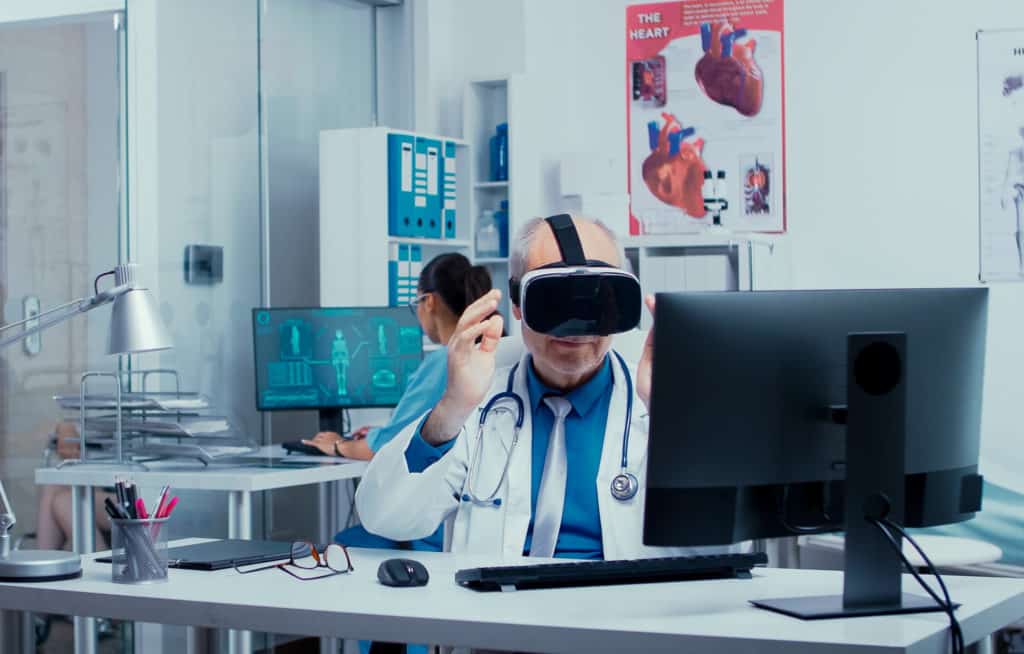The role of VR in education

In the rapidly evolving landscape of technology, Virtual Reality (VR) has emerged as a groundbreaking tool in the realm of education. This immersive technology offers limitless possibilities for enhancing learning experiences, making complex subjects more accessible, and engaging students on a profound level.
This blog post explores the transformative role of VR in education, highlighting its benefits, implementation challenges, and future potential. By delving into various applications of VR in learning contexts, we aim to provide a comprehensive understanding of how this technology is reshaping the educational landscape.
Revolutionizing Learning Through Immersion
At its core, VR offers an immersive learning experience that traditional teaching methods cannot match. By simulating real-world environments and scenarios, VR allows students to explore, interact, and learn in ways that engage their senses and ignite their curiosity.
Science education, for example, has been particularly transformed by VR, enabling students to conduct experiments in virtual laboratories or take educational journeys through the human body. Such experiences not only enhance understanding but also reduce the materials and safety risks associated with physical labs.
Moreover, VR facilitates experiential learning. History classes can become time-travel escapades, visiting ancient civilizations and historical events, thereby fostering a deeper connection with the subject matter.
But the benefits of VR in education extend beyond engagement and immersion. It also offers personalized learning paths, adapting to each student's pace and learning style, which is crucial in catering to diverse learning needs.
Overcoming the Roadblocks
Despite its potential, the incorporation of VR into educational settings is not without challenges. The high cost of VR equipment and the need for technical expertise for setup and maintenance are significant barriers to widespread adoption.
Further, there is a learning curve for both educators and students. Teachers need training to effectively design and implement VR-based lessons, while students must acclimate to this novel way of learning.
Accessibility concerns also need to be addressed, ensuring that VR educational resources are inclusive and available to students with disabilities.
VR in Action: Case Studies
Several institutions have already begun to harness the power of VR in education. Stanford University's Virtual Human Interaction Lab, for example, uses VR to teach environmental science, simulating scenarios that show the impact of human actions on global warming.
In medical education, VR simulations are used for surgical training, allowing medical students to practice procedures in a risk-free environment, leading to improved learning outcomes and patient safety.
Across the pond, the University of Nottingham's Mixed Reality Lab has embarked on projects that integrate VR into language and music education, showcasing the versatility of VR in enhancing a wide range of subjects.
These examples underscore the tangible benefits and the exciting potential of VR in transforming educational experiences.
Looking Ahead: The Future of VR in Education
As technology advances and becomes more affordable, the integration of VR in educational settings is expected to grow. Future advancements may include more sophisticated simulations, enhanced interactivity, and integration with other technologies like artificial intelligence (AI) and augmented reality (AR) to create even more engaging and effective learning experiences.
Furthermore, as research into VR's educational applications continues, best practices for its implementation will become clearer, easing the path for more schools and institutions to adopt this technology.
However, the future of VR in education is not just about technological advancement but also about fostering collaboration between educators, technologists, and policymakers to ensure this technology reaches its full potential in enriching learning experiences for students worldwide.
The Role of Educators and Institutions
For VR to thrive in educational settings, educators and institutions must play a proactive role. This includes seeking training and professional development opportunities, collaborating with VR developers, and advocating for policies and funding to support VR adoption.
Moreover, educators can contribute by sharing best practices and experiences, thereby building a community of practice that fosters innovation and supports the effective use of VR in education.
Conclusion
The role of VR in education signifies a major shift in how we approach teaching and learning. With its ability to provide immersive, interactive, and personalized learning experiences, VR holds the promise of transforming education in unprecedented ways. However, realizing this potential requires overcoming technical, financial, and accessibility challenges. By working together, the education community can harness the power of VR to create engaging, effective, and inclusive learning environments that prepare students for the future.
Embracing VR in education opens a new chapter in the evolution of teaching and learning. As we navigate this journey, the interplay of technology, pedagogy, and collaboration will be crucial in leveraging VR's full potential to enrich educational experiences and outcomes.

Related